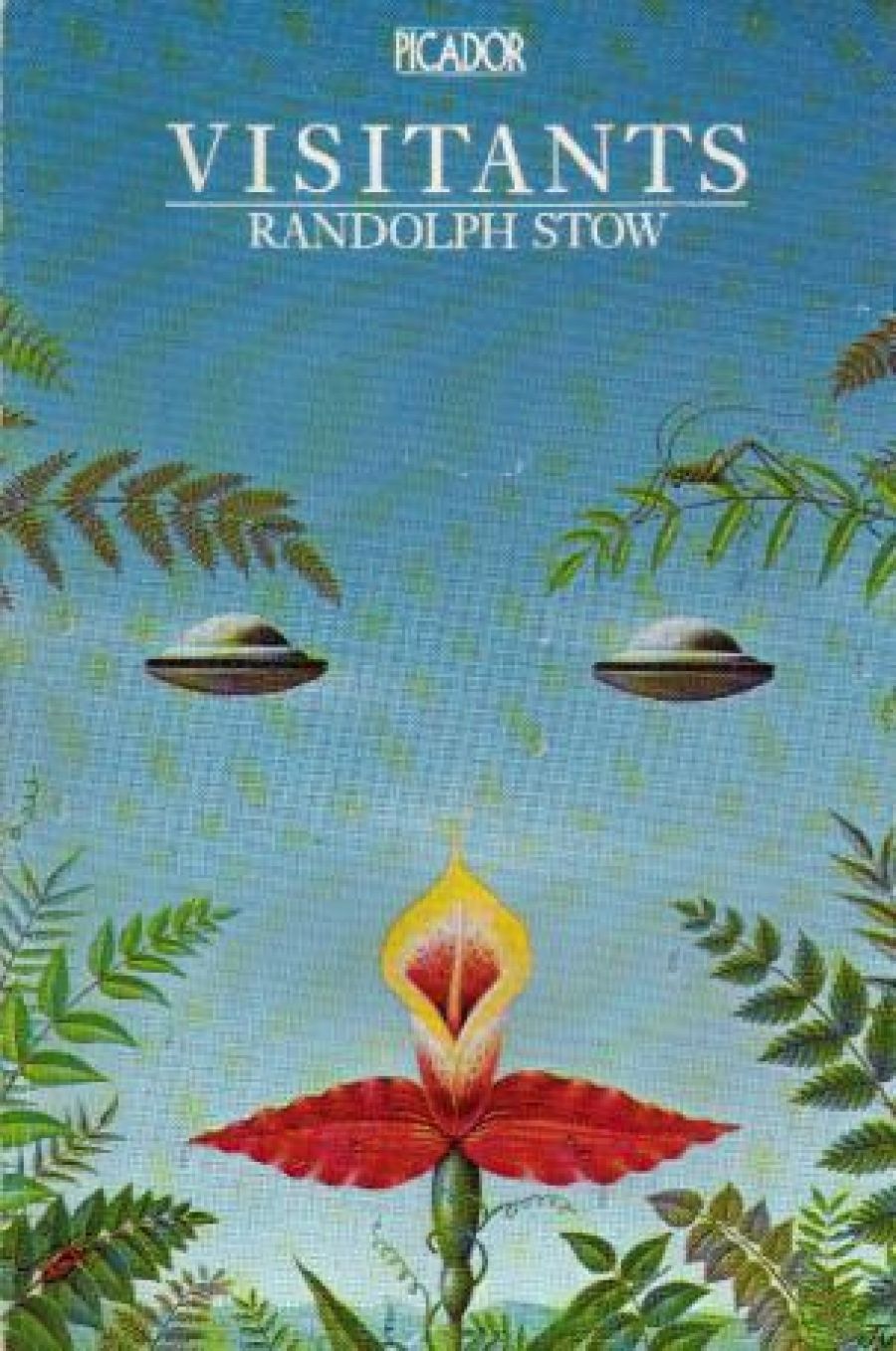
- Free Article: No
- Contents Category: Fiction
- Custom Article Title: Anthony J. Hassall reviews 'Visitants' by Randolph Stow
- Review Article: Yes
- Article Title: Rich novel breaks long silence
- Online Only: No
- Custom Highlight Text:
Visitants marks the welcome return of Randolph Stow the novelist. Stow’s last novel, The Merry-Go-Round in the Sea, appeared in 1965, and since then this once prolific writer has been extraordinarily reticent.
The publication of Visitants, the promise of a sequel in the near future, and, coincidentally, his selection for the Patrick White Award for 1979, may point to a decisive break in the long silence which has puzzled and indeed dismayed his admirers.
- Book 1 Title: Visitants
- Book 1 Biblio: Secker & Warburg, 189 pp, $16.90 pb
After so long a silence Visitants might well have proved an anti-climax. It is not. It is a subtle and complex work which will certainly enhance Stow’s already considerable reputation. It deals with themes familiar from his earlier work - To The Islands in particular - but with a maturity and a sureness of touch which that early work did not always command. In this book the confrontation between black and white cultures is set in the Trobriand Islands, off the East Coast of Papua, where Stow worked as assistant to the government anthropologist in 1959, the year in which the book is set.
White Australian culture is represented by two young patrol officers and a planter nearing the end of a long life in the islands. The Melanesian culture which surrounds them, and which they try, with limited success, to comprehend, is also represented by two disparate generations, an old chief Dipapa in conflict with his young heir Benoni.
Racial, sexual, and generational conflicts are skilfully combined. The story, which centres on Alistair Cawdor, deserted by his wife and finding it increasingly difficult to occupy a no-man’s-land between two cultures, is a tense and compelling one which manages to include a good deal of anthropological and religious speculation without any slackening of pace.
The Melanesian culture which Cawdor, and Stow, attempt to penetrate has been overlayed and complicated by visitations from alien, European cultures, and so dense is the final result that reading the book might almost be compared to carrying out an archaeological dig, in which the fragments encountered have to be identified, fitted together, and assigned to their correct levels. The ostensible form of the book - that of an official enquiry into the events narrated - is expanded into a manner similar to Faulkner’s in As I lay Dying, with the various characters narrating the segments they witness in quick rotation. Stow thus combines the impetus of consecutive narration with the individual insights of point-of-view narration. The final effect is complex but not confusing.
The book is impressively, if unobtrusively structured, like Tourmaline and The Merry-Go-Round in the Sea. The writing is spare, as always in Stow, and the more evocative for saying only a little. He has lost none of his power to recreate with extraordinary vividness, land and seascapes, colours and scents, the look and feel of his settings. Visitants is a rich and fascinating book. Let us hope that we do not have to wait so long for its sequels.


Comments powered by CComment